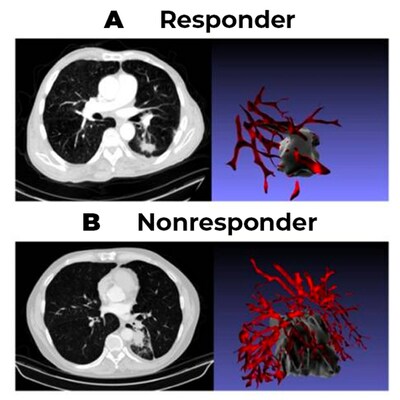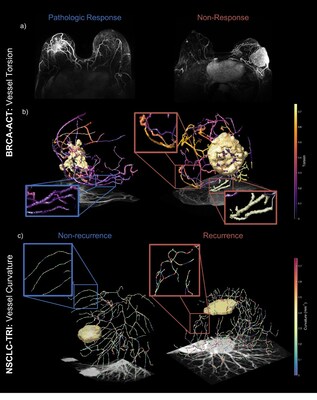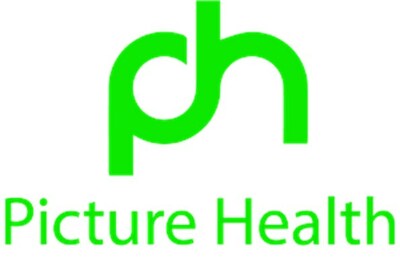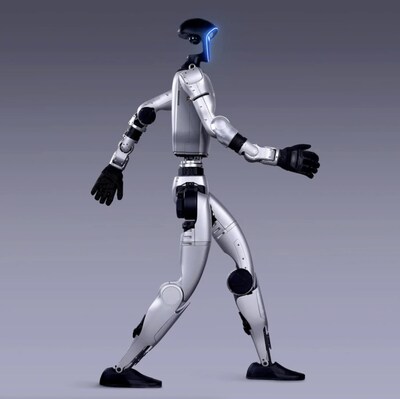Cancer Biomarkers With a Twist? Ground-Breaking Discovery of Twisted Tumor Blood Vessels Means New Understanding for Cancer Treatment
Press Releases
Mar 09, 2023
The new biomarker of twisted blood vessels is being developed for clinical application by AI newcomer, Picture Health, to better predict patient outcomes.
Building on their academic research discovering the new biomarker, the team at Picture Health will rapidly develop AI tools utilizing QVT for use in clinical care. This new biomarker, tangled and disorganized tumor blood vessels, is a new, yet critical, indicator for cancer outcomes and can provide new prognostic insight for a variety of treatments.
- Picture Health is at the cutting edge of new technology focused on bringing AI treatment selection and monitoring to clinical use
- Immune Checkpoint Inhibitors (ICIs) are quickly becoming a first-line cancer treatment despite not benefiting the majority of patients
- Peer reviewed scientific papers were published in Clinical Cancer Research and Science Advances and highlighted by the NCI
- New studies utilizing Picture Health technology analyzed over 1000+ lung and breast cancer patients, factoring in common treatment strategies like immunotherapy and chemotherapy
- New quantitative vessel tortuosity (QVT) biomarker measures twisted blood vessels that grow erratically to feed the tumor
CLEVELAND, March 9, 2023 /PRNewswire/ — Picture Health today announced plans to commercialize a new artificial intelligence (AI)-powered biomarker with the potential to transform the way doctors decide how to treat cancer. This critical advancement in cancer outcomes research sheds new light on cancer tumors: analyzing the state of the blood vessels that feed them. Recently published studies have shown the technology to be a powerful tool for determining whether a patient will benefit across multiple cancers and treatment strategies. Using routine diagnostic imaging, such as CT scans, the studies applied AI algorithms to extract a map of the blood vessels surrounding the tumor. And what they found was surprising – and telling.
“Tumors trick our bodies into building new blood vessels to grow and spread,” explains Picture Health’s Head of AI and author of the Clinical Cancer Research study, Nathaniel Braman, PhD. “But these blood vessels differ from the kind ordinarily found in the body. Measuring their shape and organization can help predict if a patient will respond to treatment.”
“Tumor-associated vessels are more twisted and disorganized,” continues Braman. “We found that the more chaotically arranged blood vessels surrounding a tumor are, the less likely treatments like chemotherapy or immunotherapy are to help.” In addition, looking at quantitative vessel tortuosity (QVT) over time while a patient is on treatment can accelerate physician response assessment, as it may indicate treatment effectiveness earlier than changes in the size of a tumor.
About the Studies
Analyzing a variety of radiologic scans of more than one thousand patients with breast or lung cancer, the studies leveraged QVT to predict patient outcomes for a number of common treatment strategies, including chemotherapy, immunotherapy, and surgery. The first study was led by Braman, while the second study, published in Science Advances, was from the lab of Anant Madabhushi, PhD of the Emory School of Medicine. In this study, patients were evaluated both before and after they were treated with immune checkpoint inhibitor (ICI) therapies. They found that changes in vessel twistedness was an important indicator of when treatment was – or wasn’t – working.
“Vessel shape and arrangement is a new cancer imaging biomarker that hasn’t been considered before,” explains Madabhushi, Picture Health’s Chief Scientific Officer. “It’s a game changer, allowing us to possibly prevent wasting a patient’s time and move to a treatment that has a better chance of a more favorable outcome.”
Next Steps
These studies are the latest in a large body of scientific literature published by Madabhushi’s academic team. Picture Health will take the next step to further develop these tools to make them available for clinical use – to aid those millions of patients affected by lung cancer (over 2 million diagnosed every year).
“Our technologies have so much potential to enable oncologists to improve cancer care that we are focused on moving them into the clinic quickly,” says Madabhushi. “Thankfully, we’re working with multiple pharma and clinical partners to accomplish this.”
QVT is just the beginning. Unlocking all of the insights contained in clinical images to help oncologists treat cancer patients is the company’s vision – and mission.
“At Picture Health, we’re building predictive AI tools to help clinicians decide the best course of action for their patients as early as possible, so that precious time isn’t wasted,” says CEO, Trishan Arul. “These new tools are uncovering hidden information in routine clinical images – and that is key to transforming cancer care.”
About Picture Health
Picture Health is working to develop novel artificial intelligence tools to provide better insights for tumor diagnosis, prognosis, treatment selection and tumor monitoring. Its Px AI solutions turn routine clinical images into a valuable data source that unlocks the potential of every pixel to help radiologists, pathologists and oncologists provide the best cancer care to their patients.
Potential Images
The blood vessels feeding tumors which respond to cancer treatment are less twisted and more organized (A) compared to those surrounding tumors which do not respond to treatment (B).
QVT analyzes the torsion & curvature of blood vessels feeding cancer tumors. These characteristics are strongly associated with treatment response and likelihood of cancer recurrence in both lung and breast cancer.
![]() View original content to download multimedia:https://www.prnewswire.com/news-releases/cancer-biomarkers-with-a-twist-ground-breaking-discovery-of-twisted-tumor-blood-vessels-means-new-understanding-for-cancer-treatment-301768274.html
View original content to download multimedia:https://www.prnewswire.com/news-releases/cancer-biomarkers-with-a-twist-ground-breaking-discovery-of-twisted-tumor-blood-vessels-means-new-understanding-for-cancer-treatment-301768274.html
SOURCE Picture Health






